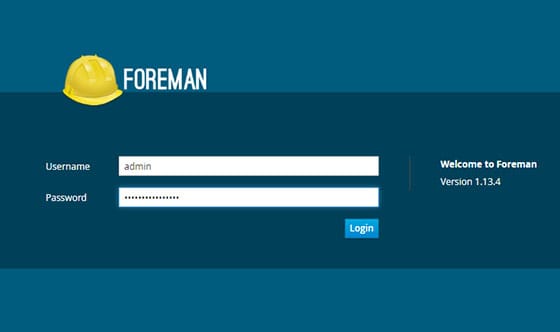
In this tutorial, we will show you how to install Katello on your CentOS 7. For those of you who didn’t know, Katello is an open-source content management software. It also performs provisioning and configuration tasks using the foreman. In other words, we can say Katello is an open-source Satellite server, which pushes updates to its registered Linux Servers or clients. In fact, it is a lifecycle management plugin for Foreman which handles subscription, and repository management.
This article assumes you have at least basic knowledge of Linux, know how to use the shell, and most importantly, you host your site on your own VPS. The installation is quite simple and assumes you are running in the root account, if not you may need to add ‘sudo‘ to the commands to get root privileges. I will show you the step-by-step installation of Katello content management software on a CentOS 7 server.
Prerequisites
- A server running one of the following operating systems: CentOS 7.
- It’s recommended that you use a fresh OS install to prevent any potential issues.
- SSH access to the server (or just open Terminal if you’re on a desktop).
- A
non-root sudo useror access to theroot user. We recommend acting as anon-root sudo user, however, as you can harm your system if you’re not careful when acting as the root.
Install Katello on CentOS 7
Step 1. First, let’s start by ensuring your system is up-to-date.
yum clean all yum -y update
Step 2. Set Hostname and Firewall Rules.
Use the following command to set the hostname:
hostnamectl set-hostname "katello.idroot.us"
Also, update the hostname file too inside /etc/hostname:
echo "192.168.77.1 katello.idroot.us" >> /etc/hosts
Once done with the hostname now you’ll need to change firewall rules to open the ports for Katello:
firewall-cmd --permanent --zone=public --add-port=80/tcp --add-port=443/tcp --add-port=5647/tcp --add-port=9090/tcpfirewall-cmd --permanent --zone=public --add-port=8140/tcp --add-port=8443/tcp --add-port=8000/tcp --add-port=67/udp --add-port=68/udp --add-port=69/udpfirewall-cmd --reload
Step 3. Installing Katello.
Katello requires some repositories to be set up before the installation process so there are some repositories that here we are setting up for Katello:
yum -y install http://fedorapeople.org/groups/katello/releases/yum/3.2/katello/el7/x86_64/katello-repos-latest.rpm yum -y install http://yum.theforeman.org/releases/1.13/el7/x86_64/foreman-release.rpm yum -y install http://yum.puppetlabs.com/puppetlabs-release-el-7.noarch.rpm yum -y install http://dl.fedoraproject.org/pub/epel/epel-release-latest-7.noarch.rpm yum -y install foreman-release-scl
Run the following command to install Katello packages:
sudo yum update sudo yum install katello
Next, configure your server with NTP for time syncing. Set the time zone with respect to your location:
rm -f /etc/localtime ln -s /usr/share/zoneinfo/Asia/Calcutta /etc/localtime yum install ntp -y ntpdate in.pool.ntp.org
Next start Katello installation using a foreman-installer command like shown below:
foreman-installer --scenario katello --foreman-admin-username admin --foreman-admin-password <Specify_Passwd>
*In the above command replace Specify_Passwd with a strong password and this password will be used to log in to the foreman dashboard in web access of Katello.
When the installation will be completed, you’ll get an output stating that Installing Success. If in case your server is running behind the proxy server then you’ll have to run the below given command:
foreman-installer --scenario katello --katello-proxy-url http://<Proxy-Server_Name_or_IP> --katello-proxy-port <Proxy-port> --foreman-admin-username admin --foreman-admin-password <Specify_Password>
Step 4. Accessing the Katello.
Katello will be available on HTTP port 80 by default. Open your favorite browser and navigate to http://katello.idroot.us or http://server-ip-address and complete the required steps to finish the installation. Use the username as admin and the password that we specify in the above step.

Congratulations! You have successfully installed Katello. Thanks for using this tutorial for installing Katello content management software on a CentOS 7 server. For additional help or useful information, we recommend you check the official Katello website.